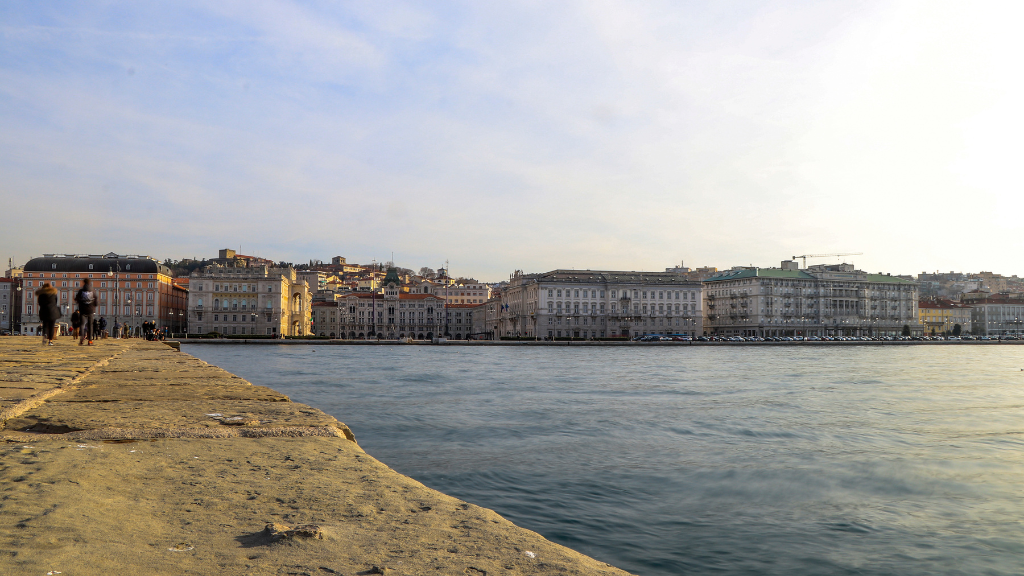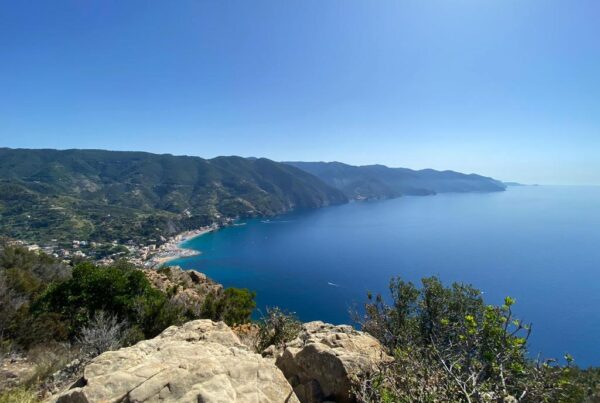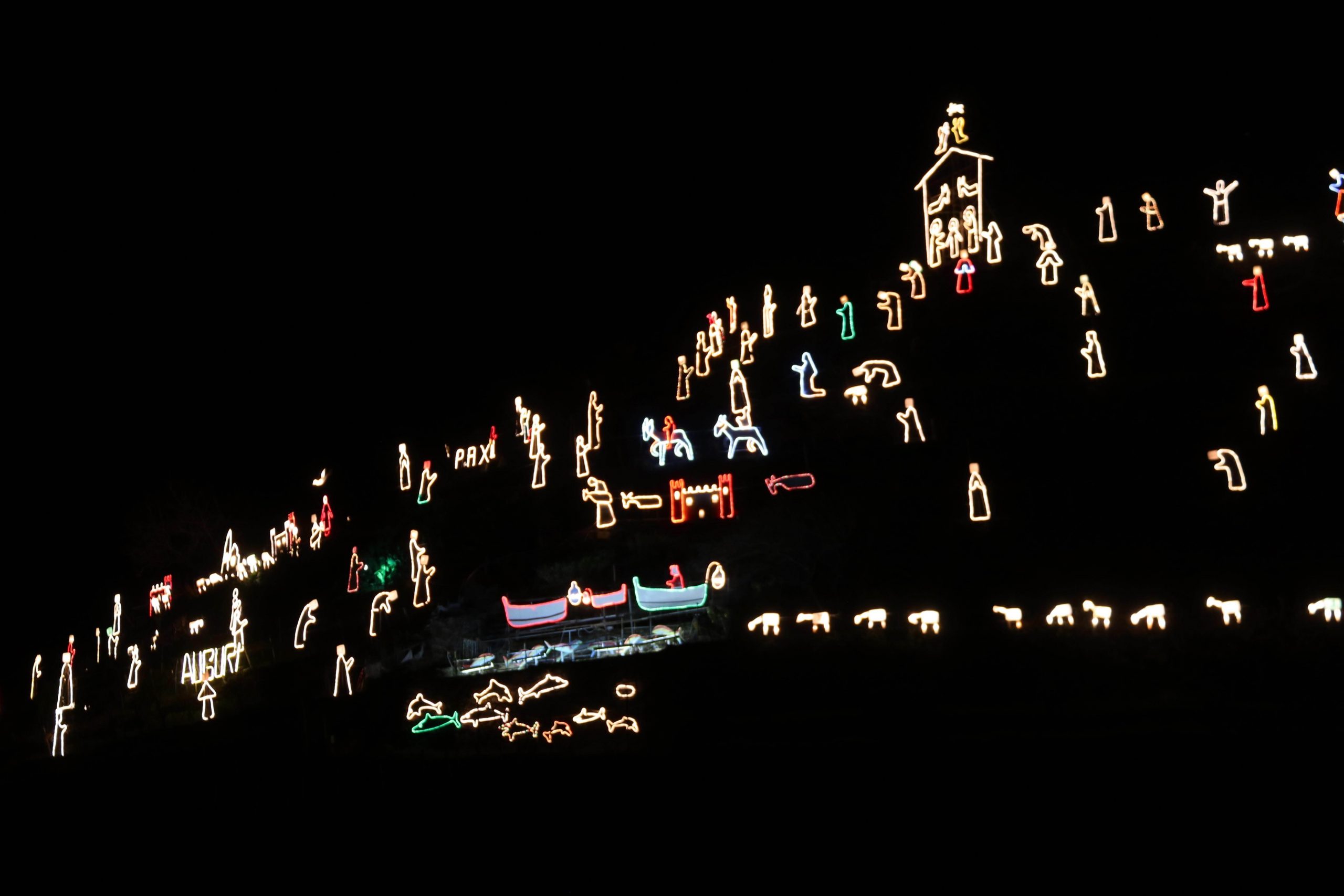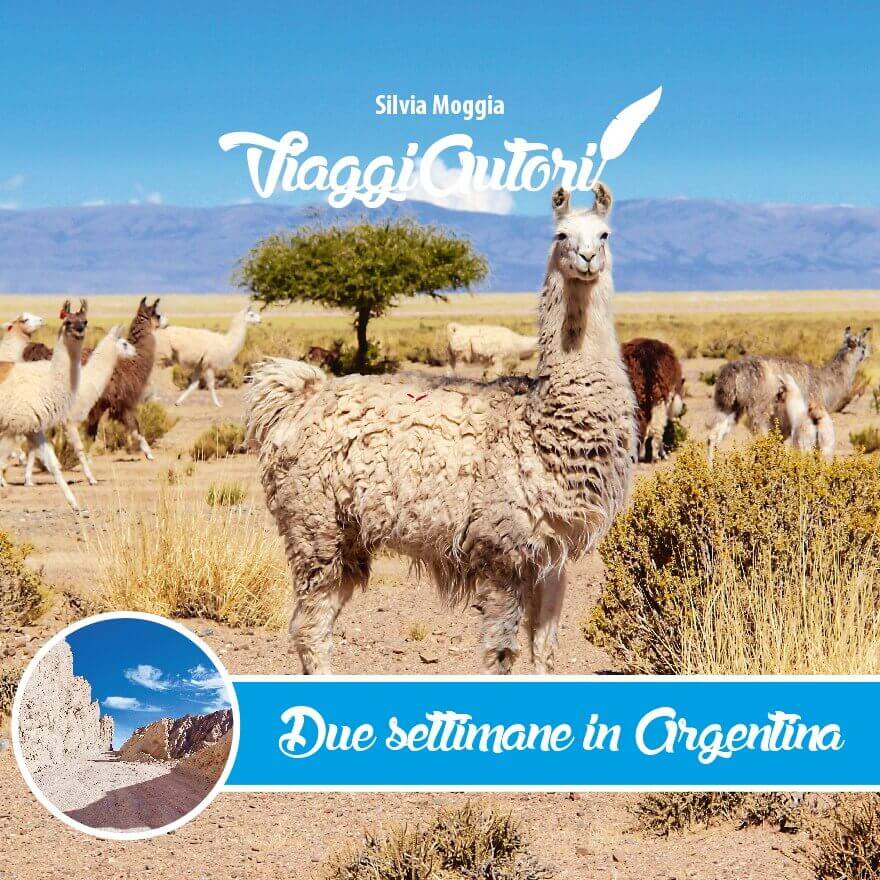Trieste is a very Viennese or rather very Austro-Hungarian small city in Northern Italy, next to the Slovenian border. It is a gem to be discovered and enjoyed. A well-preserved old town that combines the central European style with its Roman origins and the sea.
Famous for its cold, gale-force Bora wind, the city saw the Romans and the Byzantines, but centuries of Austrian rule left the most enduring mark.
The winds also brought James Joyce, who lived intermittently in the city in the early 20th century, and inspired many others, such as Rilke, Saba and Svevo.
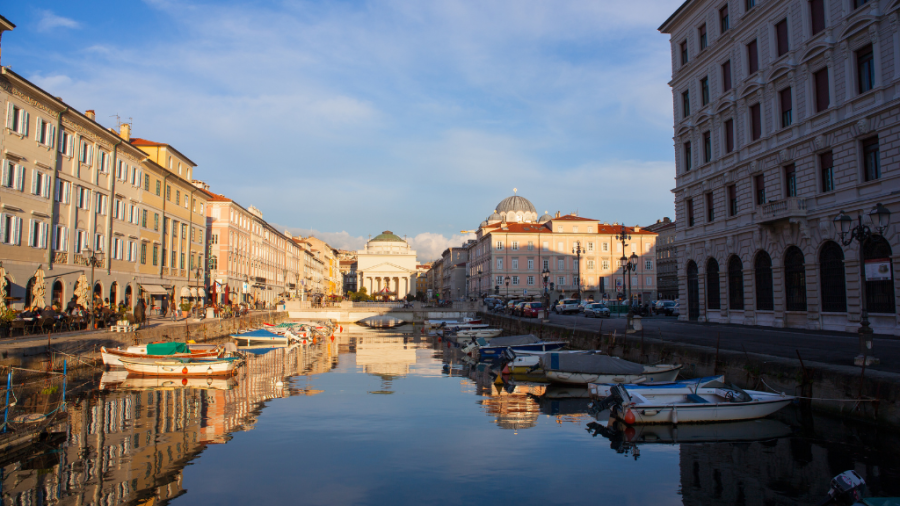
Visiting Trieste
Trieste is relatively small and can be visited on foot: in the footsteps of the great writers who lived there, climbing the hill to discover the ancient Roman city that dominated the bay or walking along the seafront.
During my last three-day stay, I followed this itinerary, exploring some of the surrounding areas I skipped during my first visit.
Day 1: Exploring Trieste
- Piazza Unità d’Italia: This stunning square by the sea is one of the largest in Europe and offers a beautiful view of the Adriatic Sea. Take your time to admire the architecture, soak in the atmosphere, and come back at different hours during the day cause the light is magical and the colours and the mood change following the sun and the moon, and it’s just oh-so-breathtaking.
- City Hall (Palazzo del Municipio): Located in the square, this grand building is worth a visit for its historical significance and beautiful architecture.
- The Grand Canal: Enjoying a stroll along the Grand Canal, lined with charming buildings and cafes, is a true treat, and you can take amazing pictures.
- Civico Museo di Storia Naturale di Trieste: If you’re interested in natural history, don’t miss this museum, which houses a fascinating collection of exhibits on the region’s flora and fauna. I loved it!
- Castello di Miramare: Take a bus or taxi to visit this fairy-tale castle overlooking the Adriatic Sea. Explore the lush gardens, stroll along the castle’s terraces, and admire the stunning interiors and the breathtaking views. The glory of the Hapsburgs lives eternally at Miramare Castle. Built by Archduke Ferdinand Maximilian, the seaside Gothic Revival structure of white Istrian stone feels like a museum of 19th-century craftsmanship. (A dedicated post is coming soon!)
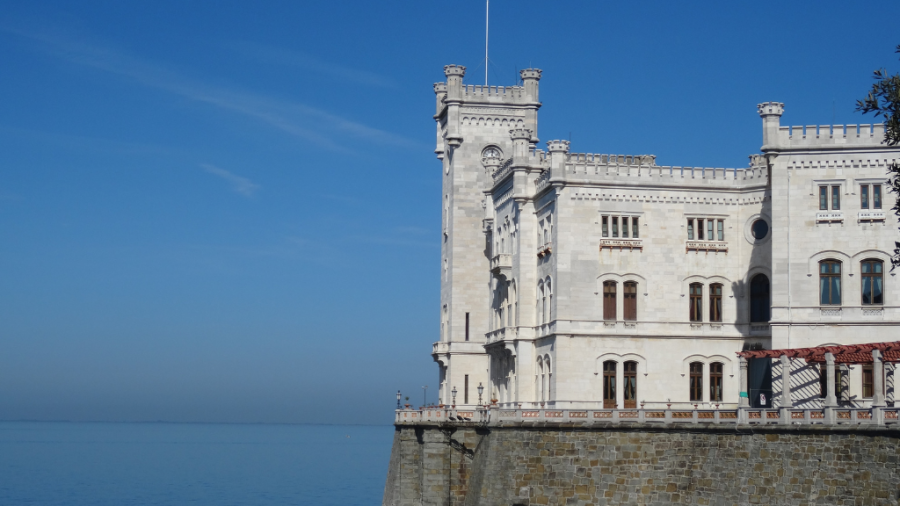
Day 2: Cultural Immersion
- Museo Revoltella: This contemporary art museum showcases works by Italian and international artists. Explore the exhibits and gain insight into the modern art scene.
- Synagogue and Jewish Museum: Trieste has a rich Jewish heritage, and a visit to the Synagogue and Jewish Museum provides a fascinating glimpse into the community’s history and culture.
- The Roman Ruins: Take a guided tour or explore on your own to discover the remnants of Trieste’s Roman past, including the Roman Theatre and Archaeological Museum.
- Castello San Giusto: Built from the 1400s to 1600s on the site of the former Roman settlement, the fortress offers panoramic vistas of the city and sea.
- Via San Nicolò: This bustling street has shops, cafes, and historic buildings, making it the perfect place for an afternoon stroll and some souvenir shopping.
- Teatro Verdi: treat yourself to an opera night in this architectural gem.
The city has a rich literary history and has been home to several prominent writers over the years. Some of the most famous writers associated with Trieste include:
- James Joyce: Perhaps the most famous literary figure associated with Trieste, James Joyce lived in the city for over a decade, from 1904 to 1915, and wrote significant portions of his masterpiece, “Ulysses,” while living there.
- Italo Svevo: Born in Trieste in 1861, Italo Svevo was an Italian writer best known for his novel “La Coscienza di Zeno” (“Confessions of Zeno”). Svevo’s works often explore themes of psychology, identity, and the human condition. He was a close friend and literary influence on James Joyce during their time in Trieste.
- Umberto Saba: Umberto Saba was an Italian poet and writer born in Trieste in 1883. His poetry is highly regarded for its introspective and lyrical qualities, often reflecting themes of love, memory, and the city of Trieste itself. Saba’s works have had a significant impact on Italian literature.
- Rainer Maria Rilke: The renowned German-language poet Rainer Maria Rilke spent significant time in Trieste during the early 20th century. He found inspiration in the city’s cosmopolitan atmosphere and proximity to the sea.
These writers left an indelible mark on Trieste’s cultural landscape and continue to be celebrated and remembered in the city’s literary heritage.
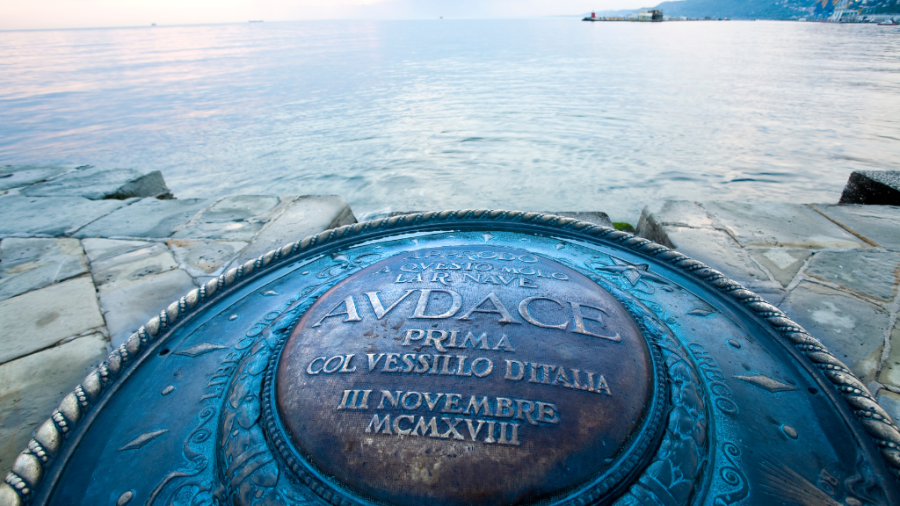
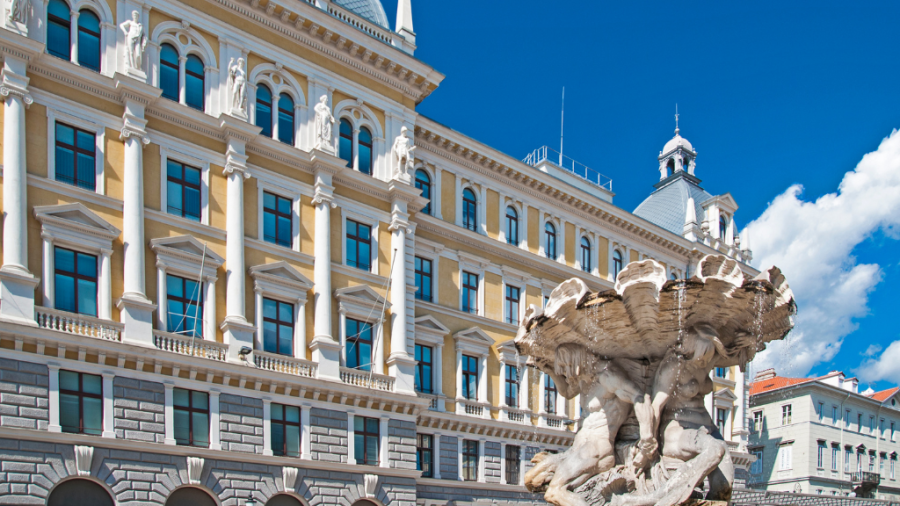
Extra Day: Exploring the Surroundings
For your extra day, consider renting a car to explore the beautiful surroundings of Trieste. Here are a few suggestions:
- Visit the Grotta Gigante: This enormous cave, located just a short drive from Trieste, is one of the largest tourist caves in the world. Take a guided tour to explore its vast chambers and underground formations.
- Explore the Carso Plateau: Drive through the scenic Carso Plateau, stopping to admire the rugged landscape, visit charming villages, and perhaps indulge in some wine tasting at a local vineyard.
- Relax at Duino Beach: If the weather is nice, spend some time relaxing on the beach at Duino, where you can swim, sunbathe, and enjoy the beautiful coastal scenery.
The food and drinks you need to try
In Trieste, you’ll find a delightful array of culinary delights that reflect the city’s diverse cultural influences. Here are some must-try dishes and drinks:
- Scampi alla Busara: This classic Triestine dish featuring langoustines cooked in tomato and wine sauce. It’s rich, flavorful, and perfect for seafood lovers.
- Jota: A hearty soup made with beans, sauerkraut, and potatoes and often flavoured with smoked pork (I don’t eat meat, so I looked for a recipe without it). It’s a warming dish that’s especially popular in the colder months.
- Frico: A simple yet delicious dish made with cheese (typically Montasio cheese) and potatoes or sometimes with cabbage. It’s fried until crispy, resulting in a savoury, cheesy treat.
- Calamari Ripieni: Stuffed squid filled with a mixture of breadcrumbs, garlic, parsley, and sometimes seafood. It’s a flavorful dish that showcases the region’s fresh seafood.
- Goulash: Reflecting the city’s Austro-Hungarian influence, goulash is a popular dish in Trieste. It’s a hearty stew made with beef, onions, paprika, and other spices.
- Strucolo de Pomi: A traditional pastry filled with apples, walnuts, cinnamon, and sugar. It’s a sweet treat that pairs perfectly with a cup of coffee.
- Presnitz: A special pastry filled with walnuts, almonds, figs, and spices. It’s often enjoyed during holidays and special occasions.
- Palacinke: Thin pancakes similar to crepes, typically filled with jam, Nutella, or fresh fruit. They’re a delicious way to satisfy your sweet tooth.
- Triestine Coffee: Trieste has a long-standing coffee culture, so indulge in a cup of espresso or try a local speciality like a “capo in b” (a cappuccino with a dash of hot chocolate).
- Prosecco: As you’re in this area of Italy, why not enjoy some crisp and refreshing Prosecco, a sparkling wine that pairs perfectly with seafood dishes? But it’s also perfect while musing in front of a seaside sunset, without any food.
- Istrian Malvasia: This white wine from the nearby Istrian Peninsula is fruity and aromatic, making it a great accompaniment to many of Trieste’s seafood dishes.
- Grappa: A traditional Italian digestif made from pomace, the leftover grape skins, seeds, and stems from winemaking. It’s a strong spirit often enjoyed after a meal, but I must admit I skipped it as it’s not my cup of tea.
- Aperol Spritz: This popular Italian cocktail made with Aperol, Prosecco, and soda water is perfect for sipping as you watch the sunset over the Adriatic Sea.
These are just a few culinary delights you can enjoy in Trieste. Take your time to explore the local Mercato Coperto, a two-level market with touches of Art Deco, and restaurants to discover even more delicious dishes and drinks during your visit!
Wind, Austrian precision and tidiness, picturesque piazzas, sumptuous palazzo-museums, classic Austrian coffeehouses, cosy seafood restaurants, traditional recipes and grappa. It’s a perfect combination for a few days of experience and a I hope you’ll enjoy Trieste as much as I did!


